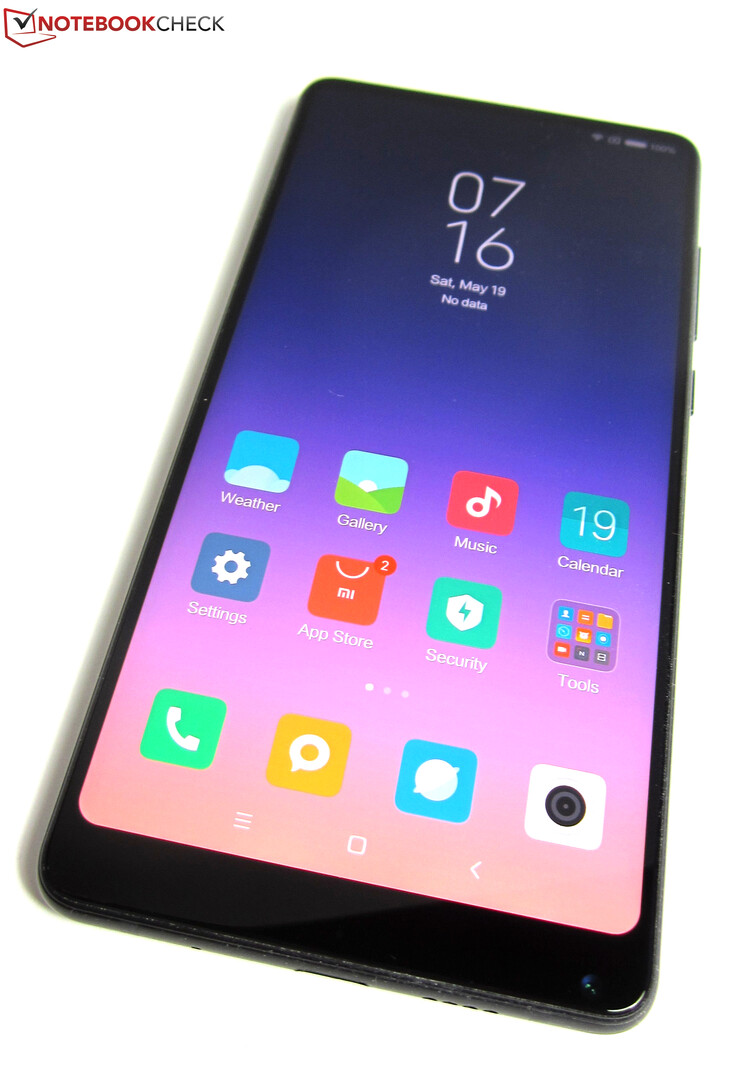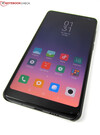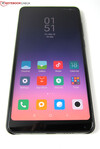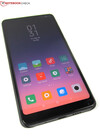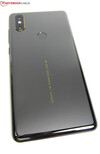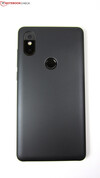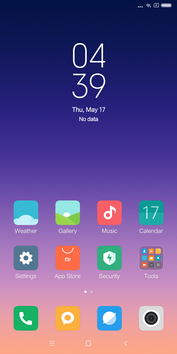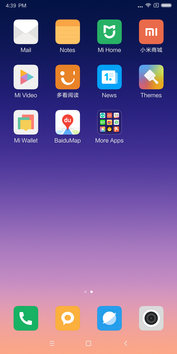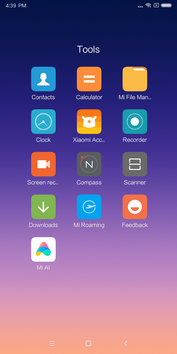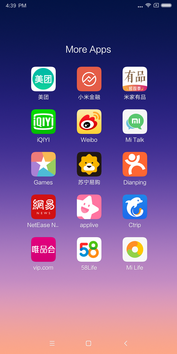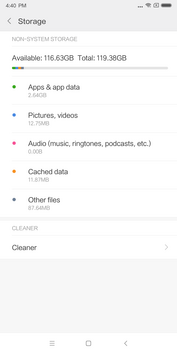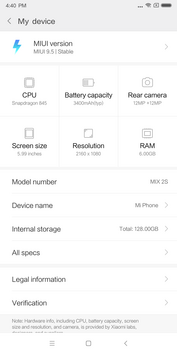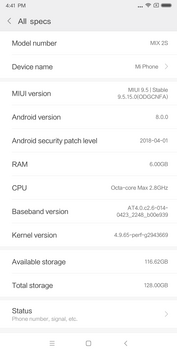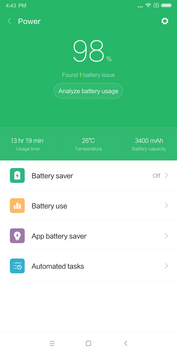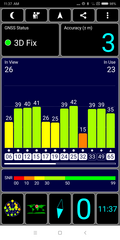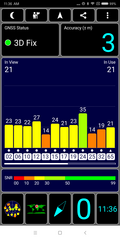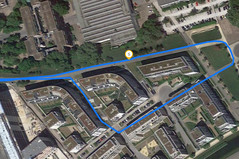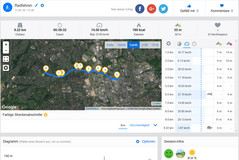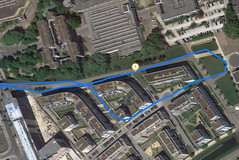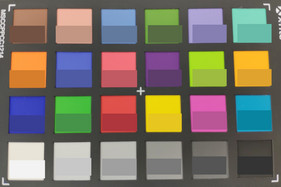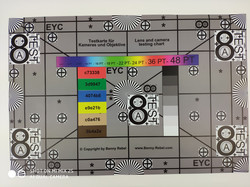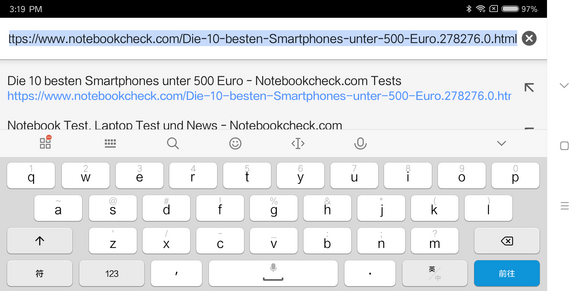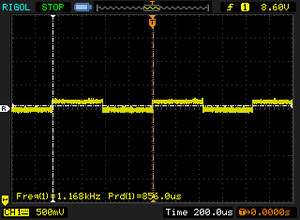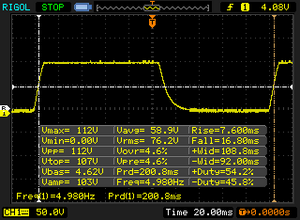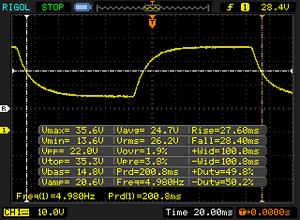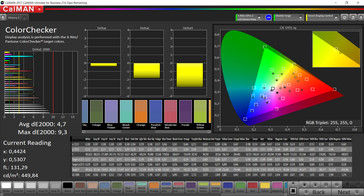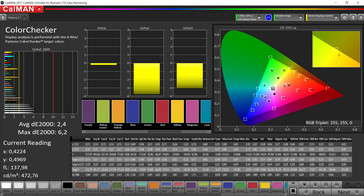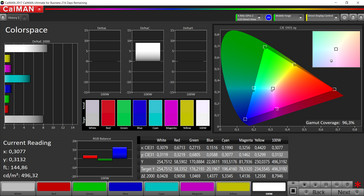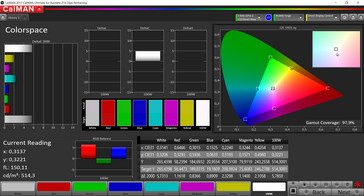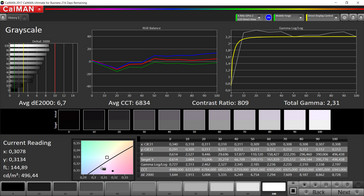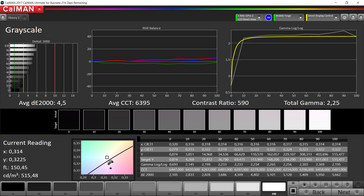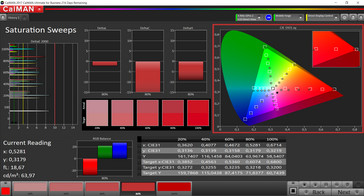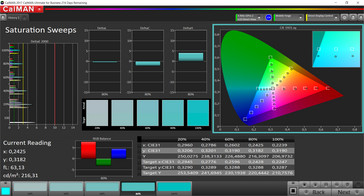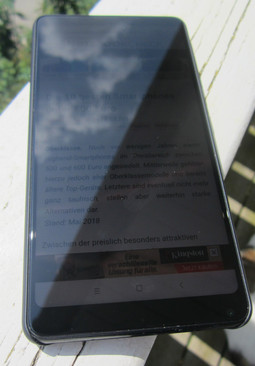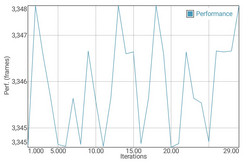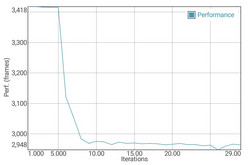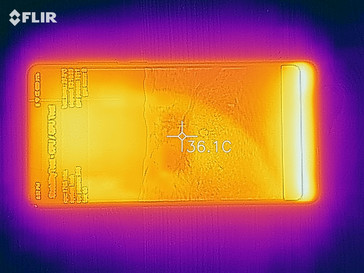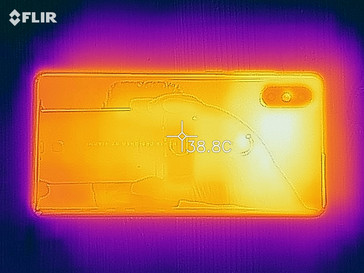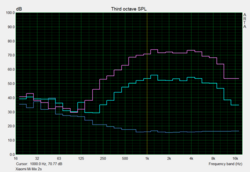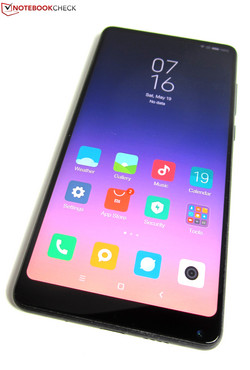Xiaomi Mi Mix 2S Smartphone Review

With the Mi Mix 2S, the Chinese manufacturer Xiaomi sends its new 5.99-inch high-end smartphone into the race. It aims to convince with very good equipment and an elegant, almost bezel-less design. The performance is ensured by Qualcomm's top SoC, the Snapdragon 845, and the Adreno 630 graphics unit. Both of them are hardware components that can also be found in the extremely fast Sony Xperia XZ2 high-end smartphone. With this, the Xiaomi also plays in the same league in terms of performance as the Apple iPhone X, the Huawei P20 Pro, and the Samsung Galaxy S9+, which we therefore included as comparison devices in our test.
We also evaluate how the Mi Mix 2S fares compared to its sibling model, the Mi Mix 2 (without the "S"). The main difference lies in the camera module. Instead of a single 12-MP sensor, the test candidate uses a 12-MP dual camera setup, which makes it the first Xiaomi smartphone to have this feature. Another argument for the Mi Mix 2S is its relatively low price. While it is not unusual that you have to pay 800 Euros (~$938) or more for many high-end models, the Xiaomi (which was officially priced at 799 Euros) is already available in online shops for less than 600 Euros (~$704; starting from $630 in the US).
Case - High-quality, robust, and with bezel-less design
The Xiaomi Mi Mix 2S weighs 189 grams (~6.7 oz) and measures 150.9 x 74.9 x 8.1 millimeters (5.94 x 2.95 x 0.32 in). It shares its elegant case design with its Xiaomi Mi Mix 2 sibling model, which it therefore resembles. The only visible differences are on the fancy back cover made from shiny ceramics: While the fingerprint sensor is also placed in the center in the Mi Mix 2S, the more powerful dual camera system has been moved to the left top corner. If you don't put the included protective cover around the phone, due to the camera lens slightly protruding from its case, it lies slightly uneven on the table.
The 5.99-inch IPS display, which is protected by Gorilla Glass 4, has a very narrow bezel measuring only a few millimeters around three sides and merging transitionless into the aluminum frame, making the whole smartphone look like it was made from one cast and very high-quality. Correspondingly, the Mi Mix 2S practically cannot be twisted even with more use of force and leaves a very robust impression. However, due to the lack of an IP certification, it hardly offers any resistance against the elements.
Equipment - USB-C, dual-SIM, but no microSD slot
Xiaomi uses the Qualcomm Snapdragon 845 high-end SoC with the Qualcomm Adreno 630 as the GPU in the Mi Mix 2S. Depending on the version, this is combined with 6 or 8 GB of RAM and 64, 128, or 256 GB of storage. There is no microSD slot, so buyers should figure out in advance which storage configuration will best fulfill their needs. On the other hand, the preinstalled ROM in our test unit used up relatively little space: Of nominally 128 GB, almost 117 GB was still available.
The Mi Mix 2S also lacks a 3.5-mm audio port. However, you can connect the corresponding headphones or speakers using the included USB-C adapter. The USB-C port only supports USB-2.0 speed, but it supports USB-OTG, allowing you to run peripheral devices with the Xiaomi. The fingerprint sensor on the back unlocks the smartphone reliably. You can insert two nano-SIM cards into a tray on the left side of the smartphone.
Software - Android 8.0 and MIUI 9.5 on the Xiaomi Mi Mix 2S
With Android 8.0, Xiaomi has installed a very current version of the Google operating system on the Mi Mix 2S. But with its in-house MIUI user interface in the version 9.5, it is very different from a stock Android. For example, there is no app drawer, so that all the installed apps land directly on the Home screen. However, after a little time getting used to it, you can navigate MIUI just as smoothly, if not even more intuitively, than standard Android. Various practical features such as the gesture navigation we already know from the Apple iPhone X or the OnePlus 5T contribute to this. There are also some helper functions such as "Dual Apps," which allows you to install an app twice, and then use the two apps separately from each other. The Android security patches are on the level of April 1, 2018, and thus they are very current.
At the time of this test, the Xiaomi Mi Mix 2S was not available with a UI version that was customized for the German market. For this reason, we could not change the language to German, nor was the Google Play Store preinstalled. However, the navigation did not pose any problems, since almost the whole user interface is in (flawless) English and you can also install the Play Store later without any trouble. We only had to get used to the settings for the preinstalled Chinese apps in Chinese. But you can remove them almost completely from the smartphone. In our test, we only failed doing this with one app. Its icon shows a smiley face, but we have no idea what it is supposed to do, since we don't know the language.
Communication and GPS - fast WLAN, precise GPS
Like the Xiaomi Mi Mix 2, the Xiaomi Mi Mix 2S is also well-equipped for communication: In addition to Bluetooth 5.0 and NFC, it also supports the LTE band 20 which is important in Germany, as well as the LTE bands 1, 2, 3, 4, 5, 7, 8, 12, and 17. Due to LTE Cat. 18, the smartphone can download at speeds up to 1.2 Gbit/s.
Things also move fast in the WLAN. Supporting 802.11 a/b/g/n/ac and MIMO-2x2 technology, the Xiaomi Mi Mix 2S delivers a performance worthy of the high-end, when communicating with our Linksys EA8500 reference router. With 668 Mbit/s while sending data, the Chinese smartphone moves to the top of the test field, and with 654 Mbit/s when receiving, it also belongs to the fastest devices. However, all of the devices have to line up behind the Apple iPhone X here. The Xiaomi Mi Mix 2S only wins its duel with the Xiaomi Mi Mix 2 due to its slightly higher send performance.
| Networking | |
| iperf3 transmit AX12 | |
| Xiaomi Mi Mix 2S | |
| Sony Xperia XZ2 | |
| Xiaomi Mi Mix 2 | |
| Samsung Galaxy S9 Plus | |
| Apple iPhone X | |
| Huawei P20 Pro | |
| iperf3 receive AX12 | |
| Apple iPhone X | |
| Sony Xperia XZ2 | |
| Xiaomi Mi Mix 2 | |
| Xiaomi Mi Mix 2S | |
| Samsung Galaxy S9 Plus | |
| Huawei P20 Pro | |
While we had to attest a few small navigation weaknesses to the Xiaomi Mi Mix 2, the Xiaomi Mi Mix 2S did very well on our bike test route. In the comparison with the Garmin Edge 500 professional navigation device, the smartphone even managed to locate us even more accurately in some sections (as you can see for example in screenshot 3, which shows the point where the route turns around).
The devices were only 20 meters apart overall, while we cannot say for sure which of the two devices gave the more accurate result. However this is still not a draw, and the Xiaomi Mi Mix 2S wins the comparison, since it is able to determine the current position just as accurately as a professional navigation device that should really have been even more accurate. This also fits with the values we determined indoors and outdoors, where the Xiaomi offered an accuracy of up to three meters.
Telephone Functions and Voice Quality
In our test, both sides of the phone calls with the Xiaomi Mi Mix 2S were clearly understandable, free of noise, and without any drops. It was able to filter out almost all the background noises and also produced a decent voice quality in speaker mode. Those who know the standard Telephone app from Android will also immediately find their way around the Xiaomi derivative: The start screen shows the number pad while the Contacts are on a second tab.
Cameras - A dual camera system with almost perfect image quality in good light conditions
As its main camera, the Xiaomi Mi Mix 2S uses a dual camera setup with a 12-MP resolution. Its main sensor is the Sony IMX363 with 12 MP (the Mi Mix 2 uses the Sony IMX386), which is equipped with a wide-angle lens, an aperture of f/1.8, and an optical image stabilizer. This is combined with another sensor that also has a 12 MP resolution and enables taking pictures with a telephoto lens and an aperture of f/2.4.
The Xiaomi smartphone can record videos at a maximum resolution of 4K (3840x2178 pixels) at 30 images per second. There is no 60-FPS video mode, but there is a slow-motion function at 1080p and 240 images per second. The webcam has a 5-MP resolution and is located at the bottom right corner, like in the Mi Mix 2. To take selfies, it is therefore best to turn the camera by 180 degrees.
Its dual cameras make the Mi Mix 2S into one of the currently best camera smartphones. During daylight (scenes 1 and 2 in the image comparison), the 12-MP camera succeeds in taking excellent pictures that convince with natural colors and a high sharpness in the details. On the other hand, the video quality cannot quite keep up with the very good photos – it is "only" a good average. There really is only one flaw: As scene 3 in the image comparison shows, the Sony sensor hits its limits quite quickly in weak surrounding light conditions. Then some details on the images appear blurry, and some graininess sneaks into the pictures.
The camera app scores with numerous settings and filters, such as a Beauty mode, group selfies, tilt-shift recordings, and a manual mode in which you can adjust all the important recording parameters yourself.
Under controlled light conditions in our test lab, the image of the test chart shows some slight blurriness. Overall, the light conditions here are comparable with the recordings taken in weak surrounding light: while the image continues to be good overall, we can see some small imperfections in the detail view. The Mi Mix 2S records the colors on the ColorChecker test chart slightly too bright in general.
Accessories and Warranty
Xiaomi includes a modular charger (5V/3A, 5V/2A, 12V/1.5A), a USB cable (Type-C to Type-A), a USB-to-3.5-mm-audio adapter, a SIM tool, a protective cover, and a quick-start guide with the Mi Mix 2S. The lender of our test unit, TradingShenzen, also added an EU adapter and a USB OTG adapter.
The official Xiaomi shop offers the Mi Mix 2S with a two-year warranty. However, at the time of our testing, the device was listed as not available yet. Alternatively, you can purchase it from importers such as TradingShenzen, receiving a one-year warranty on the smartphone in this case. Please see our Guarantees, Return policies and Warranties FAQ for country-specific information.
Input Devices and Operation - Responsive display and reliable fingerprint reader
The touchscreen of the Xiaomi Mi Mix 2S, which measures almost 6-inches, reacts to inputs very accurately, no matter whether they happen in the center of the screen or the outermost edges. Supported by the fast Qualcomm Snapdragon 845 SoC, the smartphone implements all the commands immediately and there were no delays or other blunders at all. The fingerprint reader in the back also reacts fast to the touch and unlocks the Mi Mix 2S reliably. The physical keys, the power button and the volume rocker, also contribute to the high-quality overall impression. Both offer a precise pressure point and are set into the case without any sideways play worth mention.
Our test unit of the Xiaomi Mi Mix 2S, which has not been localized, uses a Chinese keyboard, which can be switched to an English-language layout though. For better operations, you can install an alternative keyboard such as the Google Gboard and activate it in the system settings at any time.
Display - Bright and sharp but slightly poor in contrast
The Mi Mix 2S has a 5.99-inch IPS display with a resolution of 2160x1080 pixels. This results in an 18:9 format, a screen-to-body ratio of 81.9%, and a pixel density of 403 PPI. The display, which is protected by Gorilla Glass 4, has an average brightness of 462.7 cd/m² and a maximum of 492 cd/m². While this corresponds to a good brightness, the display is not very evenly lit. However, during operation you do not notice these minimal variations in the brightness, and neither can you see individual pixels on the display.
On the other hand, the black value of 0.59 cd/m² is not quite worthy of the high-end. In a realistic, more evenly distributed brightness of the display (APL50), this even rises to 0.74 cd/m². This results in a contrast ratio of 834:1 in the best case, which is not bad for an IPS display, but it is too little in the direct comparison. The Xiaomi Mi Mix 2 sibling model does significantly better with a contrast ratio of 1748:1 and most of the high-end competitors already use AMOLED displays, which theoretically achieve an indefinite contrast ratio. However, looking at it subjectively, we found nothing to complain about the display quality of the Xiaomi Mi Mix 2S; the contents are displayed with bright colors and appear anything but bland.
Some PWM flickering occurs in the IPS display, but only if the brightness is reduced to 36% or lower. At 1168 Hz, the PWM frequency is very high, so that even a sensitive person should not feel any impact from this.
| |||||||||||||||||||||||||
Brightness Distribution: 90 %
Center on Battery: 492 cd/m²
Contrast: 834:1 (Black: 0.59 cd/m²)
ΔE ColorChecker Calman: 2.4 | ∀{0.5-29.43 Ø4.77}
ΔE Greyscale Calman: 4.5 | ∀{0.09-98 Ø5}
Gamma: 2.25
CCT: 6395 K
| Xiaomi Mi Mix 2S IPS, 2160x1080, 6" | Apple iPhone X Super AMOLED, 2436x1125, 5.8" | Huawei P20 Pro OLED, 2240x1080, 6.1" | Samsung Galaxy S9 Plus Super AMOLED, 2960x1440, 6.2" | Sony Xperia XZ2 IPS, 2160x1080, 5.7" | Xiaomi Mi Mix 2 IPS, 2160x1080, 6" | |
|---|---|---|---|---|---|---|
| Screen | 37% | 37% | 22% | 36% | 15% | |
| Brightness middle (cd/m²) | 492 | 600 22% | 569 16% | 565 15% | 630 28% | 472 -4% |
| Brightness (cd/m²) | 463 | 606 31% | 578 25% | 571 23% | 632 37% | 430 -7% |
| Brightness Distribution (%) | 90 | 94 4% | 95 6% | 96 7% | 96 7% | 87 -3% |
| Black Level * (cd/m²) | 0.59 | 0.44 25% | 0.27 54% | |||
| Contrast (:1) | 834 | 1432 72% | 1748 110% | |||
| Colorchecker dE 2000 * | 2.4 | 1.2 50% | 1.3 46% | 2.3 4% | 1.5 37% | 3.5 -46% |
| Colorchecker dE 2000 max. * | 6.2 | 3 52% | 2.1 66% | 4.8 23% | 4.3 31% | 5.9 5% |
| Greyscale dE 2000 * | 4.5 | 1.6 64% | 1.6 64% | 1.9 58% | 2.1 53% | 4 11% |
| Gamma | 2.25 98% | 2.23 99% | 2.31 95% | 2.16 102% | 2.17 101% | 2.29 96% |
| CCT | 6395 102% | 6707 97% | 6401 102% | 6332 103% | 6513 100% | 7048 92% |
* ... smaller is better
Screen Flickering / PWM (Pulse-Width Modulation)
| Screen flickering / PWM detected | 1168 Hz | ≤ 36 % brightness setting | |
The display backlight flickers at 1168 Hz (worst case, e.g., utilizing PWM) Flickering detected at a brightness setting of 36 % and below. There should be no flickering or PWM above this brightness setting. The frequency of 1168 Hz is quite high, so most users sensitive to PWM should not notice any flickering. In comparison: 53 % of all tested devices do not use PWM to dim the display. If PWM was detected, an average of 8091 (minimum: 5 - maximum: 343500) Hz was measured. | |||
Display Response Times
| ↔ Response Time Black to White | ||
|---|---|---|
| 25.4 ms ... rise ↗ and fall ↘ combined | ↗ 7.6 ms rise | |
| ↘ 16.8 ms fall | ||
| The screen shows relatively slow response rates in our tests and may be too slow for gamers. In comparison, all tested devices range from 0.1 (minimum) to 240 (maximum) ms. » 60 % of all devices are better. This means that the measured response time is worse than the average of all tested devices (20.2 ms). | ||
| ↔ Response Time 50% Grey to 80% Grey | ||
| 56 ms ... rise ↗ and fall ↘ combined | ↗ 27.6 ms rise | |
| ↘ 28.4 ms fall | ||
| The screen shows slow response rates in our tests and will be unsatisfactory for gamers. In comparison, all tested devices range from 0.165 (minimum) to 636 (maximum) ms. » 92 % of all devices are better. This means that the measured response time is worse than the average of all tested devices (31.6 ms). | ||
You can activate various settings for the color reproduction in the display options, which we evaluate with the CalMAN software and the spectral photometer. For the colors, you can select from the "Default," "Warm," and "Cool" modes and for the contrast from "Automatic Contrast," "Increased Contrast," and "Standard." You get the best color reproduction with the combination "Default" and "Standard." According to CalMAN, the color deviations are lowest then, and at a Delta-E value of 2.4, they are even within the ideal range (Delta-E < 3).
Due to its high brightness reserves, the Xiaomi Mi Mix 2S even fares well outdoors and is able to flexibly adjust to varying light conditions using its quick-reacting brightness sensor. As is typical for an IPS display, the viewing-angle stability is good from all viewing angles, and there are no changes in the colors or brightness worth mention, even when looking from very steep viewing angles.
Performance - The Xiaomi handset goes head to head with the fastest smartphones
With the Qualcomm Snapdragon 845, the Xiaomi Mi Mix 2S uses a current high-end SoC, combining it with the Qualcomm Adreno 630 GPU that plays in the same performance league. Supported by at least 6 GB of RAM (alternatively, the smartphone is also available with 8 GB), the Xiaomi smartphone develops a considerable amount of power, leaving the slightly weaker equipped, but by no means slow, Xiaomi Mi Mix 2 clearly behind. Overall, it is head to head with the rest of the comparison devices and even beats the Apple iPhone X in some of the synthetic benchmarks.
Similar to a car that cannot quite bring its full performance onto the road when its wheels are spinning, the performance of the Xiaomi smartphone is not always fully used, due to the throttling that starts early on (see the corresponding test section). A good example for this is the computing-intensive 3DMark tests which run for quite a long time. Because the Xiaomi smartphone repeatedly ran into the throttling limitation there, it almost always achieved slightly lower results than the Sony Xperia XZ2 that is equipped with the same SoC. But this is of course nitpicking at a high level: The slight difference in the benchmark results will definitely have no noticeable effect in everyday usage, and despite some throttling interventions, the Xiaomi Mi Mix 2S is and will always be an extremely fast smartphone.
| AnTuTu v6 - Total Score (sort by value) | |
| Xiaomi Mi Mix 2S | |
| Apple iPhone X | |
| Huawei P20 Pro | |
| Samsung Galaxy S9 Plus | |
| Sony Xperia XZ2 | |
| Average Qualcomm Snapdragon 845 (162183 - 242953, n=23) | |
| AnTuTu v7 - Total Score (sort by value) | |
| Xiaomi Mi Mix 2S | |
| Apple iPhone X | |
| Huawei P20 Pro | |
| Samsung Galaxy S9 Plus | |
| Sony Xperia XZ2 | |
| Xiaomi Mi Mix 2 | |
| Average Qualcomm Snapdragon 845 (246366 - 299878, n=27) | |
| PCMark for Android | |
| Work performance score (sort by value) | |
| Xiaomi Mi Mix 2S | |
| Huawei P20 Pro | |
| Samsung Galaxy S9 Plus | |
| Sony Xperia XZ2 | |
| Xiaomi Mi Mix 2 | |
| Average Qualcomm Snapdragon 845 (7998 - 13211, n=26) | |
| Work 2.0 performance score (sort by value) | |
| Xiaomi Mi Mix 2S | |
| Huawei P20 Pro | |
| Samsung Galaxy S9 Plus | |
| Sony Xperia XZ2 | |
| Xiaomi Mi Mix 2 | |
| Average Qualcomm Snapdragon 845 (7360 - 9868, n=27) | |
While the Xiaomi Mi Mix 2S is not quite able to achieve the performance of the Sony Xperia XZ2 and much less the Apple iPhone X in the browser benchmarks, the overall result is more than respectable despite that. Demanding websites are rendered smoothly, and fast surfing is guaranteed.
| JetStream 1.1 - Total Score | |
| Apple iPhone X (IOS 11.1.1) | |
| Sony Xperia XZ2 (Chrome 65) | |
| Average Qualcomm Snapdragon 845 (22.5 - 90.9, n=25) | |
| Xiaomi Mi Mix 2S (Chrome 66.0.3359.158) | |
| Samsung Galaxy S9 Plus (Samsung Browser 7.0) | |
| Huawei P20 Pro (Chrome 65) | |
| Octane V2 - Total Score | |
| Average of class Smartphone (2228 - 121337, n=195, last 2 years) | |
| Apple iPhone X (IOS 11.1.2) | |
| Sony Xperia XZ2 (Chrome 65) | |
| Average Qualcomm Snapdragon 845 (3991 - 18275, n=28) | |
| Samsung Galaxy S9 Plus (Samsung Browser 7.0) | |
| Xiaomi Mi Mix 2S (Chrome 66.0.3359.158) | |
| Huawei P20 Pro (Chrome 65) | |
| Xiaomi Mi Mix 2 (Chrome 53) | |
| Mozilla Kraken 1.1 - Total | |
| Huawei P20 Pro (Chrome 65) | |
| Average Qualcomm Snapdragon 845 (2154 - 11204, n=28) | |
| Xiaomi Mi Mix 2S (Chrome 66.0.3359.158) | |
| Xiaomi Mi Mix 2 (Chrome 53) | |
| Sony Xperia XZ2 (Chrome 65) | |
| Samsung Galaxy S9 Plus (Samsung Browser 7.0) | |
| Average of class Smartphone (257 - 28190, n=154, last 2 years) | |
| Apple iPhone X (IOS 11.1.2) | |
| WebXPRT 2015 - Overall | |
| Apple iPhone X (Safari Mobile 11.0) | |
| Sony Xperia XZ2 (Chrome 65) | |
| Average Qualcomm Snapdragon 845 (96 - 291, n=23) | |
| Xiaomi Mi Mix 2S (Chrome 66.0.3359.158) | |
| Huawei P20 Pro (Chrome 65) | |
| Samsung Galaxy S9 Plus (Samsung Browser 7.0) | |
| Xiaomi Mi Mix 2 (Chrome 53) | |
* ... smaller is better
As it should be for a high-end smartphone, inside the Xiaomi Mi Mix 2S is a fast UFS-2.1 storage module, which is attested top values by Androbench. Only the Huawei P20 Pro is even a tick faster. While the Xiaomi Mi Mix 2 is almost always head to head with our test unit, due to its below-average 4-KB random reads, it does not have a chance.
| Xiaomi Mi Mix 2S | Huawei P20 Pro | Samsung Galaxy S9 Plus | Sony Xperia XZ2 | Xiaomi Mi Mix 2 | Average 128 GB UFS 2.1 Flash | Average of class Smartphone | |
|---|---|---|---|---|---|---|---|
| AndroBench 3-5 | 9% | -20% | -23% | -21% | 15% | 319% | |
| Sequential Read 256KB (MB/s) | 756 | 832 10% | 819 8% | 679 -10% | 704 -7% | 761 ? 1% | 2243 ? 197% |
| Sequential Write 256KB (MB/s) | 208.1 | 196.7 -5% | 204.9 -2% | 198.7 -5% | 208.6 0% | 296 ? 42% | 1865 ? 796% |
| Random Read 4KB (MB/s) | 135.1 | 144.3 7% | 129.7 -4% | 149.4 11% | 148.5 10% | 154 ? 14% | 296 ? 119% |
| Random Write 4KB (MB/s) | 128.4 | 160.5 25% | 22.74 -82% | 17 -87% | 15.75 -88% | 130.4 ? 2% | 339 ? 164% |
Games - Ample performance for gamers
The Xiaomi Mi Mix 2S accelerates games with its Adreno 630 high-end GPU, managing to bring even graphically very demanding games such as Arena of Valor or PUBG Mobile smoothly to its IPS display. Subjectively, all the tested games ran butter-smooth. Unfortunately at this point, we are unable to confirm this with hard facts, i.e., frame rates, since the smartphone could not be convinced to establish a connection to the Gamebench test app. Regardless of this, due to its powerful SoC, the Mi Mix 2S is definitely a future-proof investment for gamers.
Emissions - Cool operation but throttling under load
Temperature
During operation, the Xiaomi Mi Mix 2S hardly heats up. Taking the measurements on the front and back together results in a comfortable, hand-warm average temperature of 34.7 °C (94 °F) during idle. It does not get much warmer during load. Even after an hour-long stress test, the temperatures do not rise above 40.6 °C (105 °F).
However, underneath the hood, not everything remains as calm. If you challenge the Xiaomi Mi Mix 2S sufficiently, it quickly reacts with throttling. While the high-end smartphone still remains unfazed by the T-Rex test scenario of GFXBench, since this demands relatively little computing power, things look different in the significantly more hardware-intensive Manhattan test scenario. Already after a fifth of a total of 30 runs with the same game scene rendered each time, the performance drops considerably and then remains on a lower level until the end.
(±) The maximum temperature on the upper side is 40.6 °C / 105 F, compared to the average of 35.2 °C / 95 F, ranging from 21.9 to 247 °C for the class Smartphone.
(+) The bottom heats up to a maximum of 36.9 °C / 98 F, compared to the average of 34 °C / 93 F
(±) In idle usage, the average temperature for the upper side is 36 °C / 97 F, compared to the device average of 32.9 °C / 91 F.
Speaker
With its mono speaker positioned at the bottom edge, the Xiaomi Mi Mix 2S produces a solid sound for a smartphone. While the small sound membrane can produce a volume up to 83.1 dB(A), some bass is lacking. As expected, it sounds a lot better when you connect headphones to the included USB adapter. Not only will you then be rewarded with a stereo sound, but also with a much fuller sound spectrum.
Xiaomi Mi Mix 2S audio analysis
(+) | speakers can play relatively loud (83.1 dB)
Bass 100 - 315 Hz
(-) | nearly no bass - on average 26% lower than median
(±) | linearity of bass is average (9.2% delta to prev. frequency)
Mids 400 - 2000 Hz
(+) | balanced mids - only 4% away from median
(+) | mids are linear (5.1% delta to prev. frequency)
Highs 2 - 16 kHz
(+) | balanced highs - only 3% away from median
(+) | highs are linear (3.4% delta to prev. frequency)
Overall 100 - 16.000 Hz
(±) | linearity of overall sound is average (20.5% difference to median)
Compared to same class
» 35% of all tested devices in this class were better, 9% similar, 56% worse
» The best had a delta of 11%, average was 35%, worst was 134%
Compared to all devices tested
» 53% of all tested devices were better, 8% similar, 39% worse
» The best had a delta of 4%, average was 24%, worst was 134%
Xiaomi Mi Mix 2 audio analysis
(+) | speakers can play relatively loud (86.6 dB)
Bass 100 - 315 Hz
(-) | nearly no bass - on average 29.5% lower than median
(±) | linearity of bass is average (11.2% delta to prev. frequency)
Mids 400 - 2000 Hz
(±) | higher mids - on average 5.1% higher than median
(+) | mids are linear (5.3% delta to prev. frequency)
Highs 2 - 16 kHz
(±) | higher highs - on average 7.4% higher than median
(+) | highs are linear (5.2% delta to prev. frequency)
Overall 100 - 16.000 Hz
(±) | linearity of overall sound is average (26% difference to median)
Compared to same class
» 65% of all tested devices in this class were better, 6% similar, 28% worse
» The best had a delta of 11%, average was 35%, worst was 134%
Compared to all devices tested
» 79% of all tested devices were better, 4% similar, 16% worse
» The best had a delta of 4%, average was 24%, worst was 134%
Huawei P20 Pro audio analysis
(+) | speakers can play relatively loud (84.9 dB)
Bass 100 - 315 Hz
(-) | nearly no bass - on average 21% lower than median
(±) | linearity of bass is average (9.5% delta to prev. frequency)
Mids 400 - 2000 Hz
(±) | higher mids - on average 5% higher than median
(±) | linearity of mids is average (7.2% delta to prev. frequency)
Highs 2 - 16 kHz
(±) | higher highs - on average 5.6% higher than median
(+) | highs are linear (4.5% delta to prev. frequency)
Overall 100 - 16.000 Hz
(±) | linearity of overall sound is average (20.1% difference to median)
Compared to same class
» 32% of all tested devices in this class were better, 9% similar, 59% worse
» The best had a delta of 11%, average was 35%, worst was 134%
Compared to all devices tested
» 51% of all tested devices were better, 8% similar, 41% worse
» The best had a delta of 4%, average was 24%, worst was 134%
Battery life - Enduring and quickly recharged
Power Consumption
With a power consumption of 2.25 watts on average during idle and 4.89 watts under load, the Mi Mix 2S almost exactly hits the average of all the smartphones we tested that had the Snapdragon-845 SoC, so it delivers a solid performance that lets us hope for a solid battery life. However, the Xiaomi Mi Mix 2 sibling model sets the bar quite high here, since it runs slightly more energy efficient overall and also brings the larger battery.
| Off / Standby | |
| Idle | |
| Load |
|
Key:
min: | |
| Xiaomi Mi Mix 2S 3400 mAh | Apple iPhone X 2716 mAh | Huawei P20 Pro 4000 mAh | Samsung Galaxy S9 Plus 3500 mAh | Sony Xperia XZ2 3180 mAh | Xiaomi Mi Mix 2 3771 mAh | Average Qualcomm Snapdragon 845 | Average of class Smartphone | |
|---|---|---|---|---|---|---|---|---|
| Power Consumption | 2% | 35% | 34% | 3% | 14% | 4% | -2% | |
| Idle Minimum * (Watt) | 0.75 | 1.03 -37% | 0.84 -12% | 0.68 9% | 0.72 4% | 0.69 8% | 0.862 ? -15% | 0.845 ? -13% |
| Idle Average * (Watt) | 2.25 | 2.4 -7% | 1.54 32% | 0.95 58% | 2.21 2% | 2.03 10% | 1.728 ? 23% | 1.44 ? 36% |
| Idle Maximum * (Watt) | 2.26 | 2.6 -15% | 1.57 31% | 1.09 52% | 2.22 2% | 2.1 7% | 2.07 ? 8% | 1.625 ? 28% |
| Load Average * (Watt) | 4.89 | 2.96 39% | 2.47 49% | 4.58 6% | 4.6 6% | 3.18 35% | 4.87 ? -0% | 7.01 ? -43% |
| Load Maximum * (Watt) | 9.6 | 6.6 31% | 2.49 74% | 5.16 46% | 9.34 3% | 8.73 9% | 9.27 ? 3% | 11.3 ? -18% |
* ... smaller is better
Battery Life
The good results in the power consumption are reflected in a battery life that is just as good. In the two benchmarks that come closest to everyday operation, which are surfing on the web and playing an H.264 video at a display brightness adjusted to 150 cd/m², the Xiaomi Mi Mix 2S lasts for about 12 hours each time. This is enough to beat almost all of the competitors. Only the Huawei P20 Pro achieves an even better battery life overall.
In addition to the inductive Qi, the Mi Mix 2S also supports Qualcomm Quick Charge 3.0. With the latter, the smartphone is fully recharged after about 1.5 hours, if you use the included charger (5V/3A, 5V/2A, 12V/1.5A).
| Xiaomi Mi Mix 2S 3400 mAh | Apple iPhone X 2716 mAh | Huawei P20 Pro 4000 mAh | Samsung Galaxy S9 Plus 3500 mAh | Sony Xperia XZ2 3180 mAh | Xiaomi Mi Mix 2 3771 mAh | |
|---|---|---|---|---|---|---|
| Battery runtime | -20% | 15% | -14% | -13% | -16% | |
| Reader / Idle (h) | 28 | 21.5 -23% | 28.8 3% | 22.4 -20% | 23.4 -16% | |
| H.264 (h) | 12 | 10.6 -12% | 13.1 9% | 11.2 -7% | 12 0% | |
| WiFi v1.3 (h) | 11.9 | 9.4 -21% | 12.4 4% | 8.7 -27% | 11.3 -5% | 10 -16% |
| Load (h) | 4 | 3 -25% | 5.8 45% | 4 0% | 2.7 -32% |
Pros
Cons
Verdict - A very good price-performance ratio
Just like the Xiaomi Mi Mix 2, the Xiaomi Mi Mix 2S has no weaknesses worth mentioning. The workmanship of the 5.99-inch Android smartphone is first-class, the display shows a razor-sharp image of the contents, the dual camera setup belongs to the currently best smartphone cameras, and the communication modules hardly leave anything to be desired either. Furthermore, with the Snapdragon 845 there is a lightning-fast SoC, making the operation of the Mi Mix 2S amazingly smooth. While Android 8.0, which has been jazzed up via MIUI 9.5, is slightly different in its layout from a stock Android, it can be navigated at least just as intuitively and in addition offers a couple of practical extras.
There are only a few negative points with the current Xiaomi flagship: The USB-C port can only handle USB-2.0 speeds, and there is no microSD slot. You can replace the lacking 3.5-mm headset port by using the included USB adapter. In contrast to many of the high-end rivals, the Mi Mix 2S does not have IP certification, so it is neither protected from dust nor water. Those who receive the Xiaomi as an import from China, like we did, have to install Google Play, which is not really a disadvantage since it can be done quickly.
A successful feat: With its powerful overall performance, the Xiaomi Mi Mix 2S recommends itself as a good alternative to high-end smartphones such as the Apple iPhone X, Huawei P20 Pro, or Samsung Galaxy S9+.
Xiaomi Mi Mix 2S
- 05/22/2018 v6 (old)
Manuel Masiero




